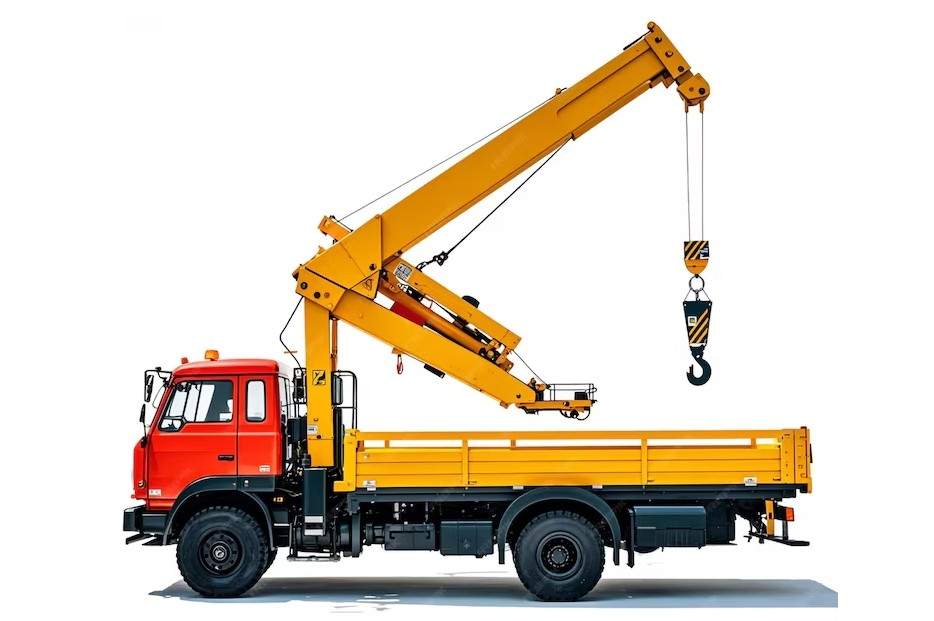


Explore how a darus teherautó works: crane-truck design, hydraulic systems, safety, and real-world lifting solutions in urban environments.
Déri Miksa, HUNGARY — July 1, 2025 — As European construction, infrastructure, and industrial sectors increasingly demand equipment that combines mobility, efficiency, and safety, a critical question emerges: “How does a darus teherautó work?” To address this query, leading engineering innovator Győrfi Daru releases a detailed 1,000‑word press guide dissecting every aspect of crane trucks (“darus teherautó” in Hungarian). From hydraulic systems to real-world case studies and future trends, this resource provides clarity for logistics managers, municipalities, and construction executives.
In traditional setups, heavy lifting often required both a truck and a separate mobile crane—creating more costs, transport planning, and coordination. The darus teherautó merges these capabilities: a powerful vehicle chassis equipped with a hydraulic crane. The result? One machine able to lift, position, and transport heavy materials and equipment with exceptional precision and efficiency—ideal for tight urban jobs, infrastructure maintenance, and off-road sites.
Crane trucks are based on strong truck frames—5 to 35 tonnes in gross vehicle weight (GVW)—built to support both payload and crane torque. Engines not only drive road travel but also power hydraulic pumps via Power Take-Off (PTO) units.
Crane booms are either:
Telescopic—extending in sections for long reach, suitable for pallet lifting or material placement.
Articulating (knuckle)—compact and foldable, allowing versatile manoeuvring in tight spaces.
A belt- or PTO-powered hydraulic pump supplies fluid at high pressure to operate:
Boom extension/retraction
Rotation via slewing ring
Winch lifts (if equipped)
Before lifting begins, hydraulically extendable outriggers deploy to stabilize and level the vehicle. They distribute weight and prevent tipping, even during off-centered lifts.
Controls are housed either in a cabin or as a remote pendant. They include joysticks, levers, and buttons to operate every crane axis: up/down, telescope in/out, rotate, and winch pulls. Some models offer telematics or proportional speed control.
Advanced crane trucks incorporate:
Load Moment Indicators (LMI) – warnings and automatic shutdown when limits are exceeded,
Anti-Two Block Sensors – prevent boom jamming,
Emergency Stop Systems – cut hydraulics in a pause,
Load-sensing circuits – adjust flow to maintain stability.
Positioning: Drive into place; engage parking brake; level chassis via stabilizers.
Safety Checks: Inspect boom, hoses, stabilizers; engage LMIs and ensure load directives show zero errors.
Set Lifting Plan: Choose the correct lifting angle, boom extension, and counterbalance configuration.
Lift & Move: Engage crane—lift slowly, swing into place, and gently lower to the target position.
Disengagement: Secure load, retract boom, fold stabilizers, and prepare for departure.
Transport: Drive to next target, repeat setup.
Darus teherautók are heavily used to lift roof trusses, steel girders, prefabricated walls, and HVAC units—especially on tight city plots with minimal space between buildings.
Utility providers rely on these trucks for installing and repairing telecommunications towers, street-light poles, and traffic signals. Municipal crews use them for park refurbishments, bridge barrier placements, and highway guard rail installation.
Warehouses, factories, and ports use crane trucks to manage inert goods like pallets, machinery, and containers—often in remote industrial zones where standard forklifts cannot reach.
Emergency-response teams deploy crane trucks to remove fallen trees after storms or to position equipment at festivals or sporting venues under tight time constraints.
Versatility – One machine combines transport and lift capacity.
Cost Efficiency – Reduced need for crane rentals and hauler coordination.
Speed – Quick setup, especially for multiple small lifts.
Maneuverability – Crane arms access ground spots unreachable by big mobile cranes.
Improved Safety – Integrated systems reduce fall risk and unnecessary labour.
Operating a darus teherautó requires a trained and certified operator with C licensed driver credentials and crane service certification per EU machinery directive. Comprehensive training covers:
Pre-use inspection,
Operating hydraulics and control awareness,
Load chart interpretation,
Emergency procedures, and
Maintenance routines.
Győrfi Daru offers classroom and onsite training in Hungarian, English, and German to ensure compliance and safe execution.
In 2024, a major housing-block renovation across narrow Budapest streets used Győrfi Daru’s darus team to install 120 prefab balconies in three weeks. Two crane trucks rotated between sites, eliminating the need for rental mobile cranes or heavy shuttle logistics. The result: a 40% time saving and 25% cost reduction compared to initial project estimates.
Hybrid & Electric Chassis – Reducing carbon footprint and working quietly in noise-restricted areas.
IoT & Telematics Integration – Vehicle health, boom angles, and geolocation streamed to management dashboards.
Remote Operation Systems – Crane trucks can work on dangerous or tight sites without an operator in the truck.
Augmented Load Analytics – Real-time load and stability feeds, enabling greater precision and safety.
Lifting Capacity: Ensure safe margin over maximum load.
Boom Reach & Reach Height: Match to your common lift distances and site conditions.
Stabilizer Footprint: Wider spans improve stability in soft-ground conditions.
Control Options: Remote-pendant or on-cabin for site safety.
Maintenance Records: Choose models with known performance and parts availability.
Safety Certification: EU/CE compliance and annual inspections via accredited bodies.
Győrfi Daru offers maintenance packages, spare-part subscriptions, and leasing options—including one-off project leasing or multi-year rentals with onsite mechanic support. They also partner with certified service centres for EU-wide coverage and compliance documentation.
Hybrid crane truck pilots reduce idling emissions and highway pollution. Additionally, Győrfi Daru supports team training in safe urban lifting, reducing street risk. All vehicles meet Euro 6 emissions standards and use biodegradable hydraulic fluids in eco-sensitive zones.
Understanding how a darus teherautó works demystifies the logic behind modern construction fleets. With safety features, hydraulic power, and integrated transport capability, these crane trucks enable precise work under pressure. Perfect for tight urban spaces, time-sensitive infrastructure jobs, and logistics-centered operations, the crane truck exemplifies engineering ingenuity in compact mobility.
Is a Budapest-based leader in heavy-lift logistics and equipment integration across Europe. The company delivers engineering solutions—crane truck leasing, consultation, operator training, and service—designed for safety, efficiency, and innovation.
Győrfi Daru
Head of Technical Communications
Email: [email protected]
Phone:: +36 (30) 944 3817 , +36 (70) 629 0283
Website: https://gyorfidaru.hu
